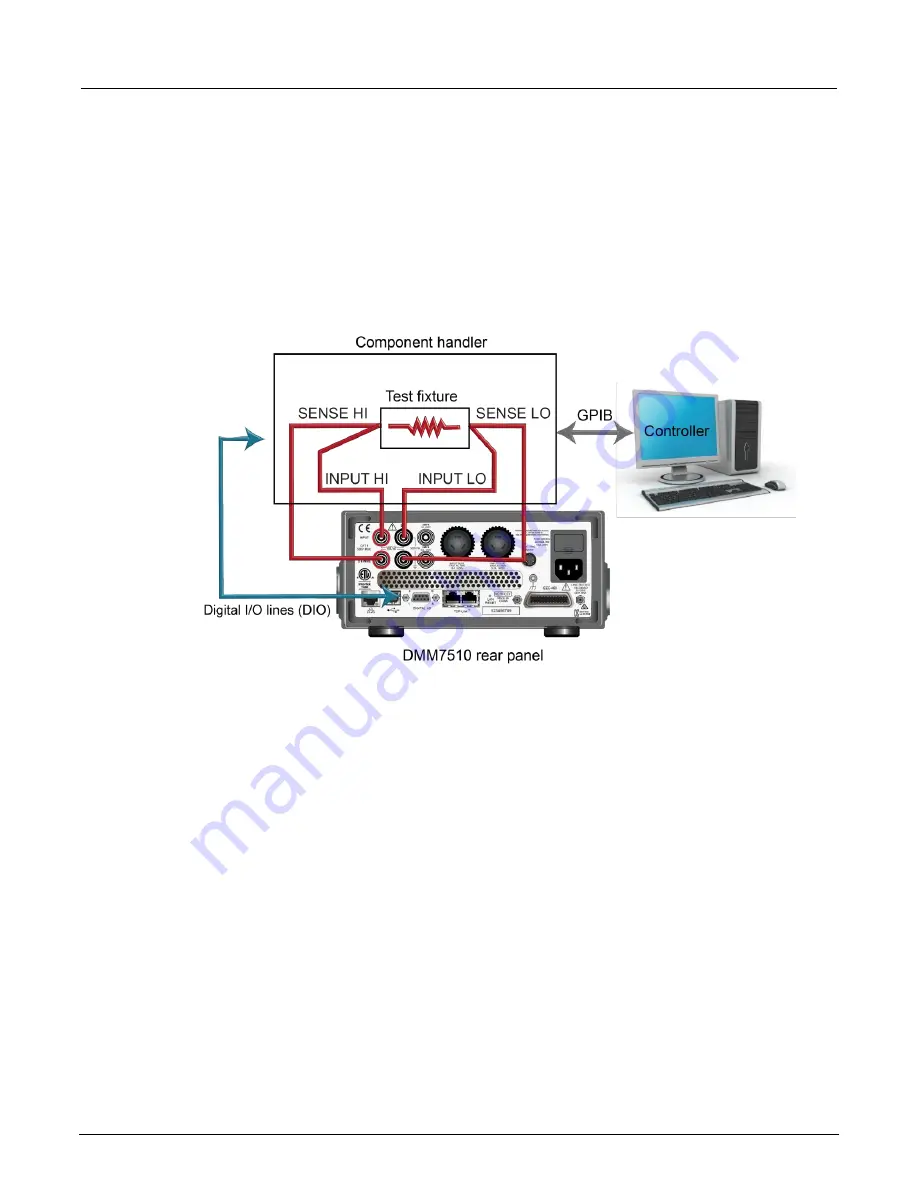
Section 5: Grading and binning resistors
Model DMM7510 7½ Digit Multimeter Application Manual
5-2
DMM7510-904-01 Rev. D March 2021
Instrument connections
In this example, the output signals that represent the grading results are sent from the DMM7510.
The signals are sent to the component handler, which bins the devices.
The figure below shows the rear-panel connections from the DMM7510 to the test fixture and the
digital lines to the component handler. In addition, there is GPIB communication between the
controller and the component handler.
Figure 9: Device connections for component binning
Resistor grading and binning test
This resistance grading application uses limit tests to inspect a single resistor under test against
multiple limits until the first failure occurs. When the resistor fails, it is placed into a designated
resistance tolerance bin as defined by the limits.
Resistors are placed into bins based on the bit patterns that are assigned to the limits. In this example,
the DMM7510 GradeBinning trigger-model template is used to simplify the application. This
trigger-model template grades components into four tolerance levels (for example, 20%, 10%, 5%,
and 1%) as defined by limits 1 to 4. A single spot measurement is inspected against multiple limits,
which tighten progressively around the same nominal value. When the appropriate tolerance level for
a resistor under test is determined, limit checking stops and the application immediately bins the
tested resistors.
Limits are inspected in ascending numeric order. The measured resistance is checked first against
limit 1, which is the 20% limit. If the resistor fails this limit inspection, its resistance value is outside of
the 20% tolerance band and the trigger model outputs the limit 1 fail pattern, which causes the
component handler to place the resistor in the limit 1 fail bin (20% fail bin).
















































